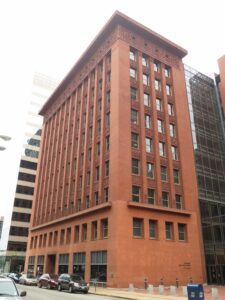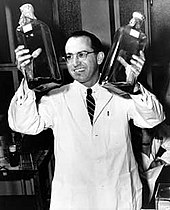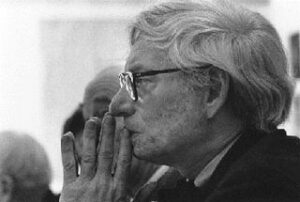Construction That Makes a Difference—The Salk Institute
When you think of the word construction, what comes to mind? Probably exposed concrete, brightly colored hard hats, long-necked tower cranes. In other words, images that might be described as gritty, modern, or urban. We typically don’t think of the finished product when it comes to construction—our minds go to the process. And that process is not typically associated with words like art or beauty or societal reform. We’re told that art can change the world as we know it; rarely are we told that construction can wield the same power.
 The Wainwright Building in St. Louis, Missouri was the first building to successfully utilize steel frame construction.
The Wainwright Building in St. Louis, Missouri was the first building to successfully utilize steel frame construction.
But it isn’t necessarily true that construction isn’t art, or that it can’t shape society in powerful ways. When we look back at history, we quickly find that construction and architecture were frequently seen as worthy art forms. Many cultures believed that buildings didn’t serve just functional purposes; they could be paths to spiritual enlightenment—like temples or synagogues—and they could be expressions of the strength and ingenuity of mankind, like the Great Pyramids of Giza. Buildings can also change the way we live and move within society, like the Wainwright Building in St. Louis, Missouri, which revolutionized the way office buildings were seen and heralded a move towards tall and compact skyscrapers for offices.
For a much more recent example of form meeting function in the world of construction, we only have to go a few decades back to 1967, when the Salk Institute for Biological Studies in California was built. But before we dive into the Salk Institute’s architectural and engineering significance, it’s important to take a look at the context in which it was created as well as the people behind its development.
“Hope lies in dreams, in imagination, and in the courage, of those who dare to make dreams into reality.” -Dr. Jonas Salk
Jonas Salk
 It took seven years for Dr. Jonas Salk to develop the polio vaccine.
It took seven years for Dr. Jonas Salk to develop the polio vaccine.
The namesake and founder of this building, Jonas Salk, was a renowned medical researcher whose efforts led to the development of one of the first successful polio vaccines in the world. Salk was born in New York City to an Ashkenazi Jewish family. After completing college, he wanted to have his own lab and was granted one—along with a professorship—at the University of Pittsburgh’s School of Medicine. But the lab wasn’t as big as he’d hoped, and he also felt too restricted by the university’s rules. In 1948, just a year after being with the university, the director of research at the National Foundation for Infantile Paralysis, Harry Weaver, reached out to Salk. Weaver asked if Salk could discover if there were more types of polio than the three currently known, and offered to provide Salk with all of the necessary equipment, researchers, and space to find out. Salk jumped at the opportunity. His project became so well-known that he received grants from the influential Mellon family that allowed him to build a virology laboratory; he also joined the aforementioned NFIP’s polio project started by President Roosevelt.
Salk’s research ultimately led him to develop the first successful vaccine against polio. Salk was so dedicated to the mission behind public health that he refused to patent the vaccine so that it could be distributed across the entire world. He remained passionate about the importance of vaccinations in maintaining public health throughout his career, to the point that in his final years, he was still publishing books and conducting research for vaccines against other illnesses.
Salk was also influential in changing the landscape of the Californian city of San Diego for more than a few reasons. After becoming a celebrity for his work in eradicating polio, Salk approached the city of San Diego and requested a gift of acreage from them so that he could accomplish his dream of establishing a place where scientists of all ages and backgrounds could come to study all aspects of biology, especially molecular and cellular biology. The city agreed; however, the 27 acres given to Salk were located in the neighborhood of La Jolla, which did not allow Jewish people (or other minorities) to own homes within their city limits. The bans against minority homeownership had existed since 1947 when La Jolla first began growing. As a result, Salk informed the city that he would only build his institute if La Jolla removed its race and religion-based residency covenants. The city was so eager to have Salk establish his institute there that they readily complied with his stipulation, and finally dismantled their discriminatory laws in 1964, just a year after the Salk Institute officially opened its doors.
Louis Kahn
"And it's important, you see, that you honor the material that you use. ... You can only do it if you honor the brick and glorify the brick instead of shortchanging it." -Louis Kahn
 Louis Kahn was one of the most influential architects of our time.
Louis Kahn was one of the most influential architects of our time.
Salk chose to commission the architect Louis Kahn to execute the vision he had for the institute. Louis Kahn was born in Russia and emigrated to the United States with his family when he was seven years old. After leaving college, he worked for several years in large firms until finally opening his own studio in 1935. It was then that Kahn began to establish his own unique style, influenced by the mid-century modern designs of that time period.
When Salk commissioned Kahn, he already had strong ideas about how he wanted the institute to look. In fact, his exact directive was for the architect to “create a facility worthy of a visit by Picasso.” In addition to this lofty requirement, Salk also wanted the laboratory spaces in the institute to be spacious, with the ability to be easily updated as future innovations emerged. The entire building itself needed to be simple and withstand the test of time, requiring as little maintenance as possible; at the same time, Salk also wanted it to be bright and welcoming so as to inspire the scientists who would work there.
Kahn took these instructions to heart. While his design made the institute beautiful, it also included many practical touches that are still useful today. Inspired by the monastery of St. Francis of Assisi, Kahn created two separate towers connected by a bridge, allowing space for natural light to fall onto the laboratories below. Kahn also separated utilities infrastructure from the labs by placing them on distinct floors, so that research could continue uninterrupted while maintenance was performed.
“The Salk Institute is a curious place, not easily understood, and the reason for it is that this is a place in the process of creation. It is being created and is engaged in studies of creation. We cannot be certain what will happen here, but we can be certain it will contribute to the welfare and understanding of man.” -Dr. Jonas Salk
Kahn also proved to be significantly ahead of his time in the designing of the Salk Institute. Long before LEED ratings existed, Kahn was designing with sustainability in mind. Underneath the institute are cisterns that collect rainwater which is then reused; the offices were built to siphon breezes from the nearby oceans, and green roofs adorned the top of the building. Had it been built today, it would have been given an LEED platinum rating.
The institute opened up to prospective researchers in 1963, although construction didn’t finish until 1965. Today, the Salk Institute remains not only a bastion of cutting-edge medical research, but also an example of how construction touches a myriad of movements, influences, and people. Since its opening, the institute focuses on plant biology, neurosciences, and molecular biology and genetics, and has produced significant research in the mission to cure neurodegenerative illnesses such as Alzheimer’s and Parkinson’s. It is also a significant landmark for La Jolla, as people often visit the institute simply to take pictures of its striking contrast against the majestic ocean behind it. Its design was one of the many to pave the way for a more sustainably-minded construction industry and its construction was a blow to discriminatory residency laws.
So the next time you’re on a project or pass by an unfinished one as you drive about the city, just remember that construction is so much more than numbers and materials—it’s also a way to impact the entire world.
Click here to learn more about the Salk Institute's architecture.

-1.png?width=112&height=112&name=image%20(4)-1.png)














